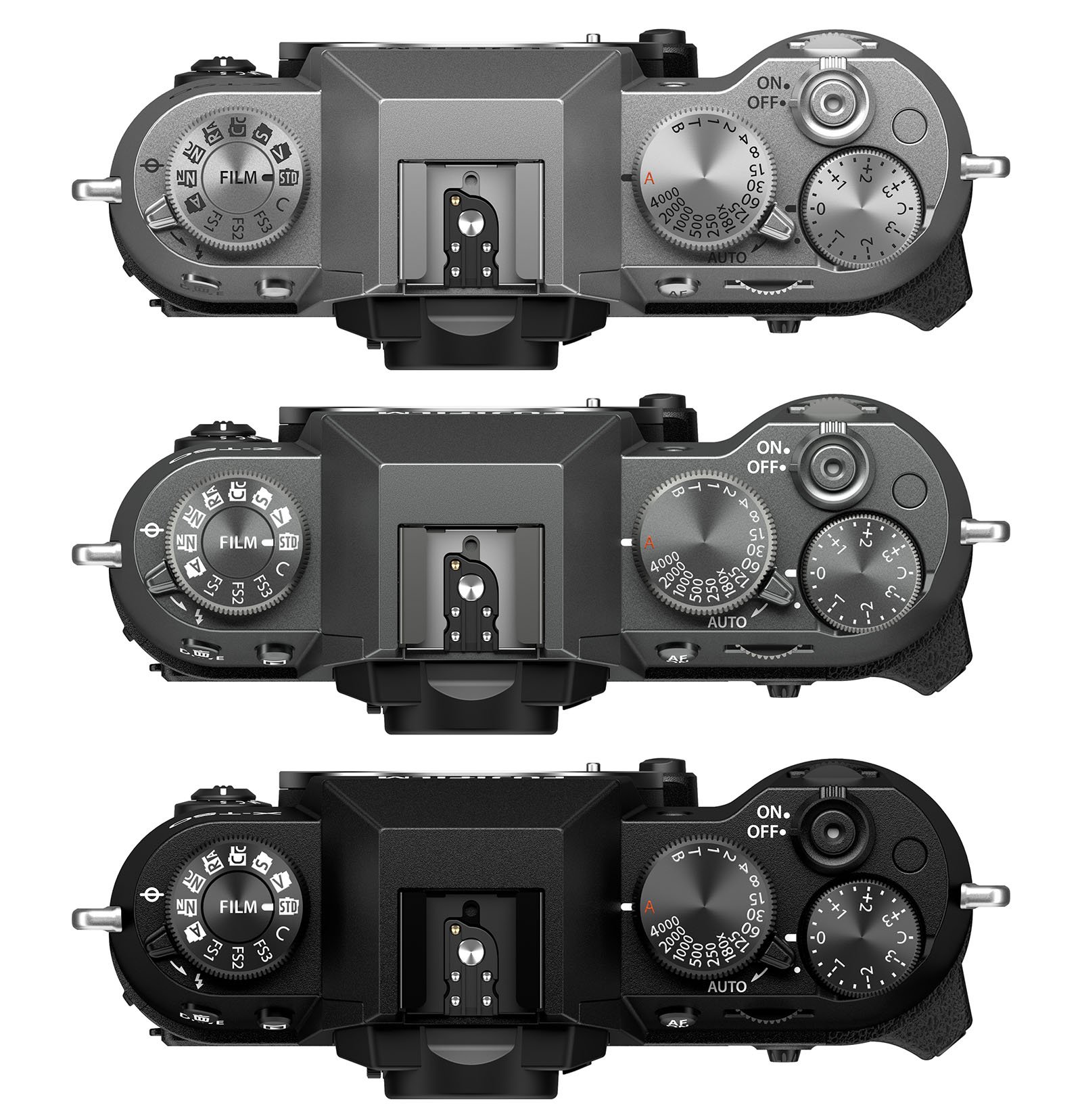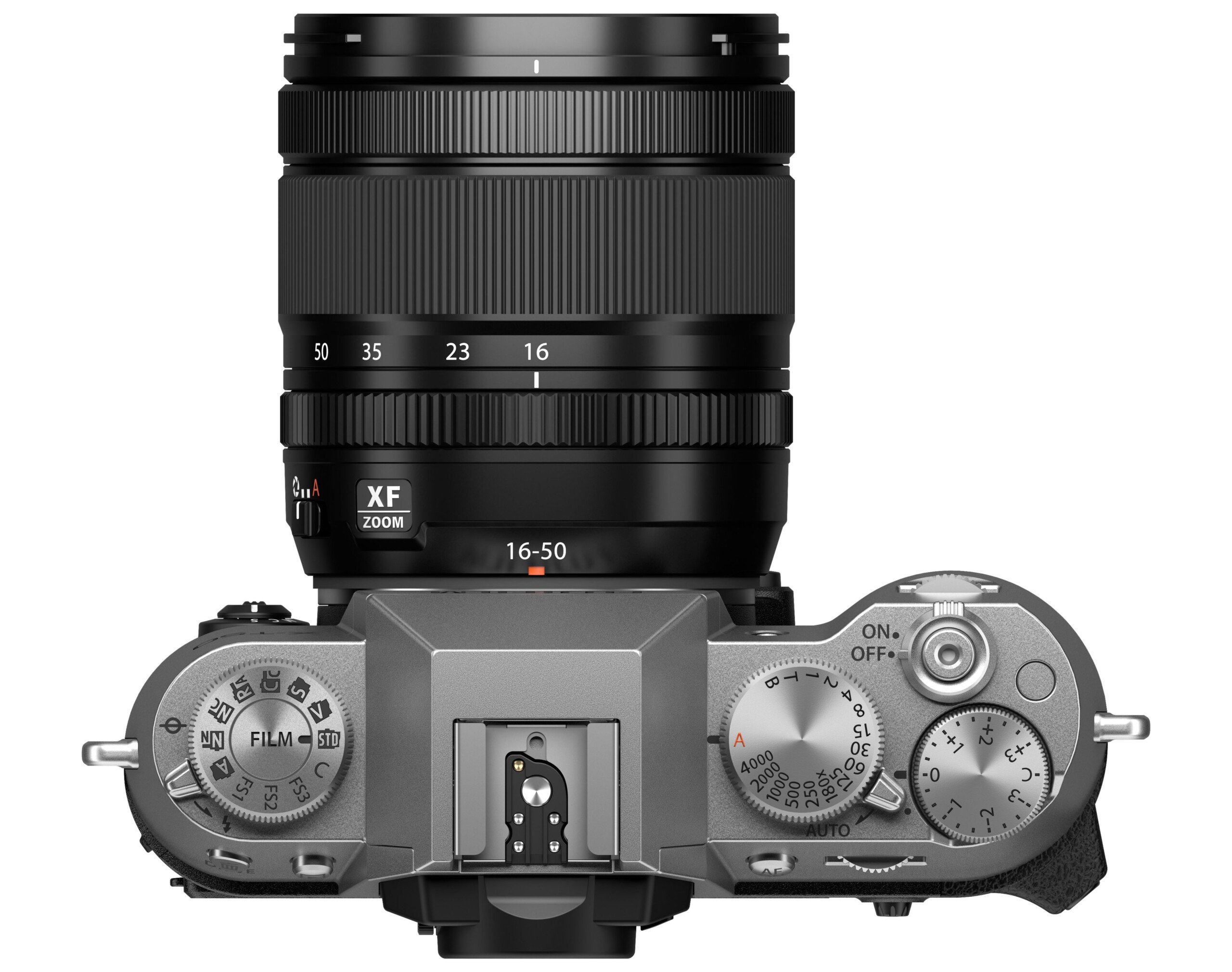![]()
The Fujifilm X-T50 combines the classic camera styling of the wildly popular X100VI with the flexibility of an interchangeable lens X Series camera. It is designed for burgeoning photographers who prioritize style over top-of-the-line performance. However, make no mistake: the X-T50 is much more than a baby X-T5.
New Dial Delivers Direct Access to Fujifilm’s Popular Film Simulations
On the outside, the X-T50 is a marked departure from Fujifilm’s prior offerings, like the X-T30 II, which the X-T50 isn’t replacing. Beyond a fresh new shape grounded in vintage style, the X-T50 is the first X Series camera to include a dedicated Film Simulation dial.

This top dial, which includes positions for some of Fujifilm’s most popular Film Simulations and custom settings for others, offers a glimpse into the X-T50’s general vibe.
40-Megapixel X-Trans Sensor in a Lightweight Form Factor
While the X-T50 sports the same 40-megapixel X-Trans CMOS 5 HR sensor as the X-T5 and X-H2, a pair of enthusiast and pro-level X cameras, the camera is aimed more at beginners and burgeoning photographers. The X-T50 is marketed toward users who want the perfect look straight out of the camera and have photos ready to share on social media rather than those who care about super-swift shooting and grade-ready video.
Beyond the Film Simulation dial, the X-T50 body offers a compact and lightweight form factor. Although the camera weighs just under 440 grams (about 15.5 ounces, it is also the first X-Txx series camera to include in-body image stabilization. In the X-T50’s case, it promises up to seven stops of shake correction. It also includes a more rounded body design and a larger, deeper front grip than a camera like the X-T30.
![]()
Some Tradeoffs Compared to the X-T5
As for displays, the X-T50 has a tilting 3-inch display with 1.84 million dots. It’s the same panel as the X-T5, albeit with a two-axis tilting rather than a three-axis. However, the EVF is quite different between the X-T5 and the X-T50. The more expensive X-T5 offers 0.8x magnification and 3.69 million dots, while the X-T50’s smaller 0.62x EVF has 2.36 million dots.
Another critical difference between the new X-T50 and the popular X-T5 is performance. The X-T5 can shoot at 15 frames per second using its mechanical shutter or 20 fps with the electronic shutter. The X-T50, on the other hand, tops out at eight fps (mechanical) and 20 fps (electronic). That’s not a huge difference, but the X-T5 also offers 160-megapixel pixel shift shooting, while the X-T50 doesn’t.
![]()
For some photographers, these are slight differences that may not move the needle much. The X-T5 offers more performance, yes, but it is larger and more expensive — $300 more expensive, in fact.
AI-Powered Autofocus and Impressive Video Specs (Especially When Recording Externally)
Where there is not much of a difference at all is autofocus. The X-T50, like the X-T5, sports AI-powered autofocus, including face and eye detection and subject detection (things like animals, birds, automobiles, bikes, and more).
As for video features, the X-T50 is an interesting one. Since it has just a single UHS-II SD card slot, some video is reserved for external recording, like ProRes and Blackmagic RAW, but the X-T50 can record 6.2K/30p video internally at 4:2:2 10-bit, which is quite impressive. It also offers DCI4K/60p and DCI4K/30p HQ mode, which is 4K output with 6.2K oversampling. The camera also includes F-Log2, which promises up to 13 stops of dynamic range, up a stop from the original F-Log.
![]()
These video features are significant upgrades compared to the X-T30 II, which tops out at DCI4K resolution, doesn’t do 10-bit internal video, lacks F-Log2, can’t record ProRes or Blackmagic RAW at all, and offers half the continuous recording time (30 versus 60 minutes).
Camera to Cloud Compatibility
Although not aimed at professionals, the X-T50 also offers native Camera to Cloud (C2C) and Frame.io functionality without using an additional accessory. Users with a Frame.io account, included with Adobe Creative Cloud, can automatically upload photos and videos to Frame.io provided they have an active internet connection, like through a connected smartphone.
![]()
Pricing and Availability
The Fujifilm X-T50 is available in black, charcoal silver, and silver colorways and will be available in June for $1,400 body only ($1,890 CAD). It will also be available in a kit with the Fujinon XC 15-45mm f/3.5-5.6 OIS PZ lens for $1,500 ($2,000 CAD).

There is a third option worth some special attention. Fujifilm has also announced the XF 16-50mm f/2.8-4.8 R LM WR lens, which is becoming the new “high-end” kit lens option for Fujifilm cameras, including the new X-T50 and existing X-T5 and X-S20 cameras. The X-T50 and XF 16-50mm f/2.8-4.8 will cost $1,800 ($2,430 CAD), while revised X-T5 and X-S20 kits will cost $2,100 ($2,840 CAD) and $1,700 ($2,300 CAD), respectively.
For complete details on this new lens, refer to PetaPixel‘s coverage and upcoming review.
Image credits: Fujifilm
